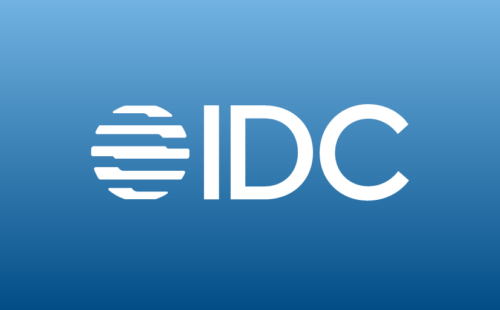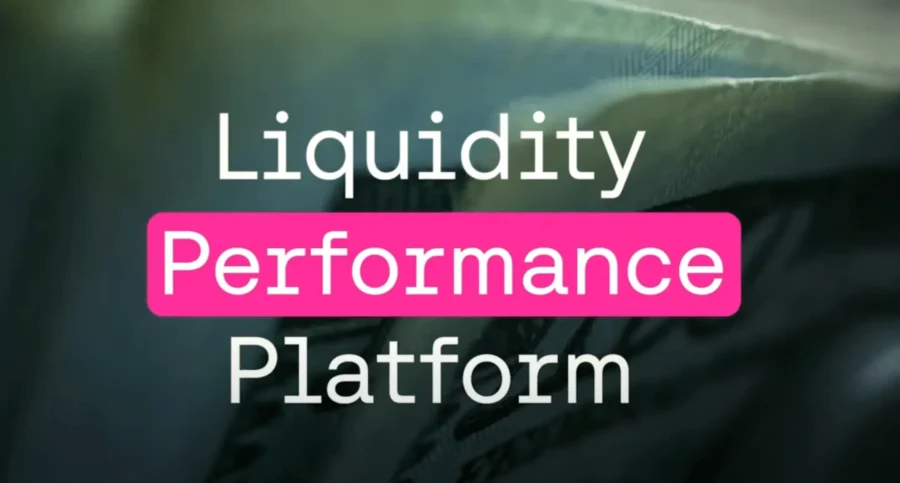A New Practice Area Emerges for CFOs: Enterprisewide Liquidity Management
The IDC White Paper commissioned by Kyriba validates the emergence of a new practice area in Enterprise IT that includes risk management, payments, real-time connectivity, treasury management and working capital optimization. Download this report...
The IDC White Paper commissioned by Kyriba validates the emergence of a new practice area in Enterprise IT that includes risk management, payments, real-time connectivity, treasury management and working capital optimization.
Download this report to understand more about the emerging trends and critical areas of practice that define how leading companies can outperform in operational efficiency, technology adoption, and process maturity.
Enterprise Liquidity Management: 51% of leaders can produce a consolidated view of cash and liquidity in under one hour compared to 8% of the less equipped companies;
Risk Reduction: 79% of leaders have implemented very effective payment fraud prevention and 69% of them effectively hedge to protect their liquidity;
Real-Time Decisions: 93% of leaders leverage real-time insights, while 85% of them have integrated data from partners and third-party members into their enterprise platforms.
Situation Overview
For CFOs, treasurers, and corporate boards, the COVID-19 pandemic represented a moment of clarity. Seemingly overnight, CFOs were faced with a crisis bigger in many ways than the 2008 financial crisis. In the space of days, treasurers had to shift from managing long-term strategic initiatives of the business to ensuring immediate access to cash to fund basic business operations.
Corporate finance leaders long burdened by dwindling IT budgets and limited head count were forced to lean heavily on their treasury and cash management tools. Unfortunately, some treasurers were hampered greatly by their legacy software packages, thwarted by a lack of agility and visibility with their legacy software. Yet, as with all major events, CFOs are often the powerful catalyst for change. The role of the CFO was already changing, but now, because of the past year, the CFO’s environment has changed as well.
Corporate finance leaders long burdened by dwindling IT budgets and limited head count were forced to lean heavily on their treasury and cash management tools.
Key Pain Points for Today’s Liquidity Management Teams
To better understand these changes, IDC conducted a survey of more than 800 corporate finance leaders and practitioners in August 20211 to explore the emerging importance corporate finance leaders are assigning to liquidity management, both during times of crisis and to leverage opportunities for growth. The results of the survey were compelling in many aspects including findings that strongly indicate urgency for CFOs, treasurers, and other financial leaders to design and deploy strategic initiatives to manage liquidity holistically. Effective and efficient liquidity management is among the top priorities for survey respondents2. Here are a few reasons driving increased urgency for liquidity management for treasurers and other financial leaders:
Ineffective communication of key treasury/financial metrics to key stakeholders through the company. Many financial leaders struggle to gather the data needed to effectively surface the key metrics to the executive teams and board members. A major part of this issue is the relative lack of real-time access to liquidity data. The survey shows that less than 30% of treasurers can leverage treasury insights in real time.
Managing points of revenue leakage including fraud and payment optimization. Given the current environment of uncertainty, financial leaders are doubling their focus on areas of revenue leakage including bank fees/changes and fraud management issues. Only 42% of leaders would characterize their ability to protect their cash/liquidity against fraud as very effective. Given the average company will experience 5–10 fraud incidents per year, the impact on liquidity/cash is immense. Fraud is not the only source of revenue leakage, according to the survey; the reduction of transaction costs and fees paid to third-party payment providers was among the top 5 priorities for treasurers seeking to improve their ability to move cash and liquidity.
Managing constant regulatory changes. The regulatory landscape is in constant flux for treasury operations including VAT changes, open banking implementation, and upcoming LIBOR changes. The CFO must have the tools to cope with these regulatory shifts. It seems that CFOs understand the urgency around this as the survey shows that increasing the budget for treasury technology and tools is the number 1 priority over the next two to three years.
Liquidity Management Emerges as a Practice Area
The events of 2020 have forced CFOs to prioritize business resiliency and continuity by optimizing liquidity management. This will mean a greater focus on working capital management3 including sourcing external funding and providing financing for critical suppliers efficiently.
Given the current economic uncertainty, cash and liquidity management have been top of mind for financial leaders. The pressure to maintain liquidity is tremendous as companies of all sizes fight to retain market position and, in some cases, simply stay alive. As a result, businesses have found themselves needing to reforecast their liquidity and cash flow more frequently (weekly or even daily). However, this is a difficult proposition for any company considering the following survey data points, according to the IDC survey of more than 800 corporate finance leaders:
Enterprise liquidity management is a “practice area” for 15% of the organizations. Survey leaders are well underway to operationalizing the building blocks of enterprisewide liquidity management (see Figure 1).
Only one in eight companies has extensive visibility into the company’s current cash positions (i.e., real-time view of more than 90% of cash).
Less than 5% of organizations can reliably forecast cash beyond three months, with most companies being able to only reliably forecast their company’s cash position out to four weeks. Further, less than 20% of organizations can forecast their company’s liquidity beyond one month.
Only half (51%) of the businesses were able to build a consolidated view of their cash and liquidity within the same day of the request.
In addition to being able to forecast and reforecast quickly and efficiently, financial leaders found that they desperately needed the ability to simulate future what-if scenarios and to create plans based on those what-if scenarios4. The benefit of this capability is that business leaders can remain in lockstep around core business objectives even as the business environment changes rapidly. Unfortunately, many financial leaders don’t have the tools to support scenario planning for liquidity, and as such, they must cope with limited visibility for decision making.
The most prominent area of impact is in decision making for treasurers and their executive teams. CFOs with limited visibility are slower to make decisions regarding money movement, internal funding of projects, or M&A activity. Furthermore, a lack of visibility can even impact the bottom line as companies may choose to be less aggressive in moving money into/out of the exchange markets and may opt for expensive external funding sources unnecessarily.
Managing Liquidity Enterprisewide Requires Unification
More and more, organizations are coming to the realization that liquidity management is not only a critical aspect of functioning in this “new normal” but also a team sport. Organizations must have a unified approach to all data, processes, and human capital related to liquidity management5. Here are the key characteristics of an enterprisewide unified liquidity management process:
Centralized liquidity / cash data
The centralization of liquidity data streamlines financial operation, allowing for better control for financial leaders. Centralization provides financial leaders with the opportunity to standardize cash management across all legal entities, reduce the number of bank accounts in use, and provide a more holistic view of bank or FX exposures.
Deep liquidity analytics
Having access to deep analytics provides users with the ability to better predict future liquidity. More importantly, it allows them the chance to find patterns or overlooked items that have business significance (e.g., identifying cash as a revenue-generating asset and monitoring bank fees and deposit rates).
Partnering environment
Financial line-of-business professionals are often left on an island. This is often the case for finance directors, controllers, and heads of accounting.
In fact, only 20% of survey respondents have their CEO as their champion who initiates unified liquidity management initiatives. The key to executive participation goes beyond simply getting the CEO involved in liquidity management decisions. The key here is to develop a partnering environment for all operational decision makers and stakeholders. This can be exceedingly difficult without the proper tools to support partnering and collaboration across business leaders. Dedicated tools to quickly expose key liquidity metrics to all stakeholders within the business are essential.
Seamless integration
Data must flow between all the relevant cash functions, including treasury, accounts payable, accounts receivable, FP&A, order management, and procurement6. In addition, the data must flow outside of the finance teams as well including investors and lenders, certain government agencies, credit rating organizations, and evens to certain customers and suppliers7. Only then will financial leaders be able to gain a holistic view of the organization’s current cash/liquidity position.
Real-time massive data
Finance leaders need real-time information to optimize decision making, but often they must wait till the end of day/period/quarter to get an accurate and holistic view of the current state of enterprise liquidity. Today’s liquidity managers need real-time data to build accurate forecasts and market simulations8. Real time is also essential in effective communication of the business cash position between stakeholders.
Follow the Leader
The process of managing treasury at the corporate level is complex and ever changing. In these cases, it is not unusual for CFOs and their treasury managers to reach out to gather advice from trusted sources. Leader companies, as defined by the survey, are more likely to reach out to their fintech partners and their accounting/audit partners for guidance than their laggard counterparts9. This is an example of how leader companies create a road map for other companies to follow.
Here are a few other areas where leaders are blazing a trail for other companies:
Involvement of the top management: A unified liquidity management strategy, when done properly, incorporates feedback from all departments. In short, a unified liquidity management strategy demands a unified approach from top finance leaders and even from the broader business leaders. For example, sales and supply chain have a massive impact on liquidity. As such, the leadership in these areas must also move in a coordinated fashion regarding liquidity management for the business.
Visibility for financial leaders and decision makers: Leaders are significantly more aware of their real-time cash availability. Over 79% of leaders were able to get >75% visibility of past liquidity compared with <20% of laggards. Over 75% of all firms can predict their cash up to four weeks reliably; however, beyond four weeks is a struggle for all firms.
The logistics of cash and liquidity: All (100%) leaders are very efficient at using pooling and sweeping to manage cash and liquidity; almost no laggards are. Leaders are focused on increasing the adoption of new and existing payment systems.
Keeping cash and liquidity protected: Close to 100% of leaders are effective at using business continuity and contingency planning, payment fraud protection, and hedging compared with 35–55% of laggards. Leaders are focused on greater digitalization of end-to-end payment authorization.
Setting financial operation up to grow cash and liquidity: Nearly all (99%) leaders have adopted business intelligence techniques to make better decisions regarding liquidity compared with 25% of laggards.
Close to 100% of leaders are effective at using business continuity and contingency planning, payment fraud protection, and hedging compared with 35–55% of laggards.
Benefits of Enterprise Liquidity Management
Liquidity and cash management will be important to adapt to the rapidly changing business environment going forward. Importantly, liquidity management is essential amid any rapidly changing business environment, whether it is a global crisis, supply chain disruption, shifts in a competitive environment, or rapid internal growth as seen with many technology companies.
Here are the key benefits of a cohesive and unified enterprise liquidity management strategy:
Improved visibility: During the height of the pandemic, business decisions needed to be made within a matter of hours. Unfortunately, in the survey, IDC found that about 50% of organizations need more than one full day to build a consolidated view of their cash and liquidity. Decisions like layoffs and supplier payments had to be made quickly, and in nearly half the cases, according to the survey data, decisions were made without a consolidated current view of cash and liquidity. Companies can’t see upcoming shortfalls or dips in cash flow, which limits their ability to invest in long-term business initiatives like digital transformation, expand into a new geographic market, migrate to a new technology platform, or broaden product and service offerings.
Better risk management: Today’s financial leaders are swimming in data and are finding FX, with all its moving parts, to be particularly difficult. Speed is another area of concern for treasurers that desire the ability to move money around the clock and in real time into and out of currency markets. However, with increased speed comes the need for more powerful real-time risk management capabilities. To highlight this, liquidity risk and fraud risk, collectively, were the most important strategic commitments, for financial leaders, to pursue over the next two to three years.
More effective compliance: The tax and regulatory environment is constantly changing directly and significantly impacting treasury management processes. Today’s liquidity management professionals must be proactive to understand how these will impact treasury and other financial operations today and how they may impact these operations in the future.
Greater process efficiency: The role of the average liquidity management professional is rapidly changing. While cash management and cash forecasting continue to be strategic priorities, liquidity managers and CFOs must also now focus on supply chain finance, insurance, and commodities. Even amid a period of expanding roles and responsibilities, many liquidity managers find themselves working with the same number of resources. The need to do “more with less” among financial professionals represents an opportunity for financial management technology vendors. According to the IDC survey, currently, 77% of financial leaders felt they lack either skills, head count, or budget to modernize their financial operation.
Greater flexibility in financing: Businesses with an enterprise liquidity operation are better able to take advantage of a wider spectrum of asset-backed debt solutions including invoice financing, lines of credit, and demand loans. The visibility and control provided by unified coordinated liquidity management allow financial leaders greater working capital options. Further, this financing flexibility also provides a boost in business resilience, which is essential in times of uncertainty. As a result, establishing a receivables financing program was the top priority to improve cash and liquidity enterprisewide.
The visibility and control provided by unified coordinated liquidity management allow financial leaders greater working capital options.
APIs Unify the Practice of Holistic Liquidity Management
The benefits listed previously and the road map laid out in the Follow the Leader section are all predicated on the smooth and rapid flow of data between various stakeholders and their corresponding applications. Specifically, unified liquidity management demands that the data from back-office applications be made available for processing and analysis. In many ways, topics such as cash management, liquidity forecasting, and treasury management efficiency all stem from robust data management practices and tools.
The importance of data management has put the spotlight on application programming interfaces (APIs) and the promise they hold when deployed properly. The survey reveals that nearly 88% of respondents consider the adoption of APIs as important or very important.
Liquidity management applications exist within a spiderweb of adjacent back-office applications and external data sources. Also, the liquidity/cash management process is a collection point for data from other multiple back-office systems/processes. Working capital management is an example of a process where data must be gathered from multiple systems/processes (e.g., ERP, procurement, accounts payable, reconciliation, and inventory). This interdependency places heightened importance on the smooth flow of data between these systems. This is where application programming interfaces become essential for liquidity management teams.
The value of APIs can potentially extend beyond the four walls of the organization. APIs can be leveraged to incorporate external data sources to sharpen financial agility in areas such as FX, banking payments data, credit decisioning data, and even geopolitical factors that may impact the global flow of goods. Yet, according to the survey, just three of five companies are using APIs to integrate and optimize their internal system infrastructure (e.g., ERP, TMS). Further, a similar percentage uses APIs to extract/analyze internal data for reporting/management (e.g., dashboards).
Leaders are always looking to adopt technology to support efficiency and agility in treasury operations. It is one of the essential differences between leaders and their laggard counterparts. For leaders, APIs are a core element of liquidity management operation. For example, 92% of leaders consider the adoption of APIs important or very important compared with 58% of laggards.
APIs from a Global Perspective
Major technology and economic hubs in Europe are significantly lagging behind the global average in terms of API adoption, according to the survey data. This represents hesitancy among major European Union (EU) players to adopt APIs (see Figure 2).
Data residency and data privacy initiatives within Europe have tempered the demand slightly for cloud-native financial applications. However, this is changing rapidly as initiatives like the EU-funded project Open Clouds for Research Environments (OCRE) continue to grow and aid in accelerating cloud adoption in Europe.
APIs Are Only the Beginning
APIs, while important, are only the beginning. They are simply pipes that allow data to flow between systems, but it is not until this flow of data is harnessed that the real power of APIs emerges. APIs can potentially form the foundation of a platform where liquidity analysis and insights are harvested and shared with key stakeholders in real time. As such, the API layer must be paired with an additional layer of software that allows for data to be analyzed and structured into actionable insights. In a sense, APIs move financial data to a larger financial operating system where financial leaders get the business-critical information they need to make liquidity management decisions in real time.
Future Outlook
Liquidity Management Has Changed Permanently in the Past 24 Months
CFOs and treasury managers suddenly find themselves facing a new reality where liquidity management is more strategic and more critical to the business than ever before. As a result, there will be permanent changes to the finance department going forward, including:
The velocity of liquidity flow data will increase. Over 50 countries have adopted some form of real-time payment schemes in the past few years, with more to come. This has dramatically increased the speed at which treasury payments can move. This increases the need for improved security and enhanced reporting tools to manage enriched data sets from real-time payment platforms.
Liquidity management becomes more essential. The pandemic will force treasurers to prioritize business resiliency and continuity by optimizing liquidity management. This will mean a greater focus on working capital management including sourcing external funding and providing financing for critical suppliers efficiently.
The role of the CFO continues to expand. The role of today’s CFO is rapidly changing and expanding. While cash management and cash forecasting continue to be strategic priorities, CFOs are also increasing their focus on supply chain finance, insurance, and commodities. However, many financial leaders find themselves working with the same number of resources. Today’s financial management professionals require more advanced and innovative technology to keep up with the challenge.
There will be a greater focus on advanced technology. To keep pace with rapidly changing market dynamics, treasurers will require their tools to be powered/enabled by cutting-edge technologies such as machine learning (ML), big data and analytics, microservices, and enhanced application programming interfaces.
Digital banking / payments will be a focus area. Payment management was critically important during the pandemic and will remain so in the post-pandemic treasury world. As a result, digital banking platforms and bank connectivity will be a strong focus area for treasurers going forward.
Finance departments long burdened by dwindling IT budgets and limited head count were forced to lean heavily on their treasury and cash management tools during the recent uncertainty. Unfortunately, some finance departments were hampered greatly by their legacy technology. But the survey data reveals that this is set to change (see Figure 3).
Here are a few key future technology trends that will shape enterprise liquidity management going forward:
Artificial intelligence (AI) is highlighted. Financial leaders for product-centric companies often must move quickly to secure supply chain obligations and financing. Many turned to advanced technologies such as machine learning and advanced analytics to help lower the data analysis/management burden and allow for more accurate decisions regarding financial management at speed.
Cloud is leading the way. The most obvious takeaway is that organizations are planning on spending more on SaaS versus traditional (on-premises, single-tenant, and managed hosted) software. IDC research shows that organizations are already seeing a shift toward the public cloud for treasury, FP&A, and accounting software, but the survey results also suggest that this trend is accelerating considering recent disruptions.
Aim to bridge the gap between finance and IT: For finance leaders, the top hurdle to digital transformation is the friction between often restrictive IT/security policies and the desire of the finance department to move quickly and be more agile. In IDC’s December 2020 Worldwide C-Suite (CXO) Survey, the most common hurdle for finance leaders to effective digital transformation agenda was the IT and security leaders slowing them down. The data reveals that financial leaders feel hampered by an inability to gather and disseminate that business-critical information to the necessary stakeholders at speed. As a result, financial leaders need more tools and features geared toward agility so that they can more quickly respond to rapid market shifts.
Rapid payment technologies / initiatives see growth: For liquidity management professionals, time is of the essence when it comes to making payments. As a result, there has been growing momentum around faster payment programs. Recently, several payment initiatives were introduced/expanded, including SWIFT gpi, SEPA instant payment, and same-day ACH.
Enterprisewide Liquidity Key Aspect of New Normal
In the past, much of the financial leader’s role was to manage rear-facing details like closing the period, reconciling GL transactions, invoice matching, or cash application. While these will always be important, the uncertainty of 2020 put more of a focus on forward-looking activities like forecast, budgeting, and planning. With the pace of change in overdrive post-2020, financial leaders are investing a large amount of time trying to anticipate and plan for the next major change in business dynamics. A larger amount of the CFO’s time must be devoted to trying to develop a financial strategy to anticipate future shifts in market dynamics. For example, prior to the event of 2020, many CFOs and financial leaders would update their cash flow and liquidity plans quarterly or on a halfyearly basis. However, the financial and regulatory landscape is shifting so quickly, due to the shock of the pandemic, that many CFOs and their teams are now updating their cash flow and liquidity plans weekly or even, in some cases, daily.
This new normal requires/demands a more unified approach to financial operations to cope with the new hyperspeed pace of economic change. It is more important than ever that financial data flow freely and quickly between key departments and key financial applications. Businesses on the leading edge have heard the call and are already making the necessary changes to thrive within this new normal. In fact, the survey shows that 15% of survey leaders are already operationalizing the enterprisewide management of liquidity as a practice area cross-functionally.
Prior to the event of 2020, many CFOs and financial leaders would update their cash flow and liquidity plans quarterly or on a half-yearly basis.
Emerging Need of a Chief Liquidity Officer
As stated previously, the importance of liquidity has increased dramatically, and the need for an enterprise liquidity management approach has grown in importance as well. When taken together, they reveal the growing need for a dedicated chief liquidity officer.
This position will act as a central point of authority and accountability for a unified liquidity management approach. This position would develop, manage, and optimize a holistic liquidity management strategy to ensure alignment with overall business objectives — especially as those objectives change/evolve/shift over time.
However, a business looking to add this position must also invest in the tools, skills, and resources to manage liquidity at an enterprise level including forecasting/simulation, data visualization, and dashboarding tools as well as an API-driven platform that leverages automation and artificial intelligence to quickly gather and disseminate business-critical financial data. As the demand for business resiliency and proactive liquidity management continues to grow, so too will the demand for a dedicated chief liquidity officer.
As the demand for business resiliency and proactive liquidity management continues to grow, so too will the demand for a dedicated chief liquidity officer.
Challenges / Opportunities
Ecosystems that must be curated: Liquidity management operations require data flows from many internal and external data sources. These data sources must be constantly curated to make sure that the financial leadership has access to the latest information and cutting-edge technology advancements. Curating ecosystems around the liquidity management solution takes effort and resources from a department that is often lacking in resources.
Getting buy-in: Data shows that many line-of-business financial managers (e.g., controllers, accounting managers, and treasurers) don’t have support for liquidity management operation transformation. While this was the case for line-of-business financial managers prior to the pandemic, according to the survey data, this phenomenon is still a reality for many line-of-business financial managers.
Data security risks: While APIs have tremendous promise for data integration, they also have the potential to expose sensitive data when not managed properly. API keys, for example, must be handled with great care or risk giving unlimited read/write access to financial information.
Conclusion
The CFO’s role has evolved into a strategic business partner for the rest of the organization, and the capability that’s required to deliver actionable intelligence downstream to the decision makers at the edge of the business or the lines-of-business leaders is evolving as well. For context, IDC believes the total available market for an enterprise liquidity management software (e.g., treasury, B2B payments, corporate payments, supply chain, and receivables financing) approached $30 billion in 2020. This is a massive opportunity for vendors to step in and help the CFO as their role changes. To access data is just the beginning of the journey to enterprise liquidity management. The ever-evolving remit of the office of the CFO is to be the lightning rod for data within the business and users of that data to power coordinated, data-driven financial business decisions throughout all facets of the organization. This demands a system that is built to aggregate, analyze, and disseminate data. This need is driving the emergence of centralized intelligent financial data platforms built upon APIs and strong data management principles. This new liquidity management platform may also necessitate the emergence of a chief liquidity officer to sit at its helm. In any case, the world of liquidity management is changing rapidly, and a unified enterprisewide liquidity management approach is no longer a luxury — it is a must for today’s business environment.
References
n = 440 European organizations, $100mil+ revenue.
Enterprise Liquidity Management Is a Focus Area for Senior Execs Among Leader Organizations: CFO, CEO, Board of Directors. In 23% of the most advanced corporates, Liquidity Management is a focus area for CEOs, whereas it mainly remains a in the hands of the treasurers for the laggards (23%)
Leaders Are Focused More on Integrating Working Capital Data, While Laggards Target Transitioning to Real-time Visibility And Improving Quality of Data Common Priority. They are more focused on integrating working capital data (43% against 27% of the less equipped companies).
80% of Leaders have adopted business intelligence techniques to make better decisions regarding liquidity.
Survey Readout slide 40–48% of Leaders Encounter Greater Disconnected Priorities Between Finance and IT Departments.
Most Leaders (75%) have transparent and well-connected corporate finance and treasury teams compared to ~30% of Laggards.
This is visibly reflected in the adoption rates across APIs for different purposes:
To integrate and optimize their internal system infrastructure – 80% Leaders vs 10% Laggards.
To leverage internal data for reporting – 90% Leaders vs 15% Laggards
To send data to partners and others – 80% Leaders vs 27% Laggards
To receive data from partners and third-party members – 85% Leaders vs 10% Laggards
>90% of Corporate finance and treasury teams of Leaders can effectively leverage real-time insights compared to only 33% of Laggards.
39% of Leaders Have a Wider Set of Fintech Partners to Support Enterprise Liquidity Management Initiatives Compared to just 7% of Laggards.
Source: IDC Enterprise Liquidity Management Study, sponsored by Kyriba, August 2021.
Want to learn more about Enterprise Liquidity Management?
You are welcome to join Kyriba's upcoming monthly live demo sessions to see the Kyriba ELM platform in action. An on-demand demo session is available here.


 Research, Currency Impact ReportsJuly 2024 Currency Impact ReportThe April 2024 Kyriba Currency Impact Report analyzes the reported effects of currencies on North American and European companies during Q2/23.Read the Report
Research, Currency Impact ReportsJuly 2024 Currency Impact ReportThe April 2024 Kyriba Currency Impact Report analyzes the reported effects of currencies on North American and European companies during Q2/23.Read the Report ResearchApril 2024 Liquidity Performance ReportThe Kyriba Corporate Liquidity Performance Report analyzes the access to liquidity for US publicly traded corporations, as an indicator of financial health to drive strategic growth.Read the Report
ResearchApril 2024 Liquidity Performance ReportThe Kyriba Corporate Liquidity Performance Report analyzes the access to liquidity for US publicly traded corporations, as an indicator of financial health to drive strategic growth.Read the Report Research, Currency Impact ReportsApril 2024 Currency Impact ReportThe April 2024 Kyriba Currency Impact Report analyzes the reported effects of currencies on North American and European companies during Q2/23.Read the Report
Research, Currency Impact ReportsApril 2024 Currency Impact ReportThe April 2024 Kyriba Currency Impact Report analyzes the reported effects of currencies on North American and European companies during Q2/23.Read the Report Research, Currency Impact ReportsKyriba’s February 2024 Currency Impact ReportThe February 2024 Kyriba Currency Impact Report analyzes the reported effects of currencies on North American and European companies during Q3/23.Read the Report
Research, Currency Impact ReportsKyriba’s February 2024 Currency Impact ReportThe February 2024 Kyriba Currency Impact Report analyzes the reported effects of currencies on North American and European companies during Q3/23.Read the Report ResearchIDC MarketScape: Worldwide SaaS and Cloud-Enabled Enterprise Treasury and Risk Management Applications 2023 Vendor AssessmentThe 2023 IDC MarketScape Report recognizes Kyriba as a leader in enterprise treasury and risk management applications for its superior liquidity management and extensive treasury capabilities.Read the Report
ResearchIDC MarketScape: Worldwide SaaS and Cloud-Enabled Enterprise Treasury and Risk Management Applications 2023 Vendor AssessmentThe 2023 IDC MarketScape Report recognizes Kyriba as a leader in enterprise treasury and risk management applications for its superior liquidity management and extensive treasury capabilities.Read the Report ResearchGet Strategic about Liquidity Management with a Supplemental Treasury Management SystemAdvanced treasury management and data-delivery capabilities enable finance organizations to see their global cash, liquidity, and risk exposures and create value for the business.Read the Report
ResearchGet Strategic about Liquidity Management with a Supplemental Treasury Management SystemAdvanced treasury management and data-delivery capabilities enable finance organizations to see their global cash, liquidity, and risk exposures and create value for the business.Read the Report ResearchA New Practice Area Emerges for CFOs: Enterprisewide Liquidity ManagementThe IDC White Paper commissioned by Kyriba validates the emergence of a new practice area in Enterprise IT that includes risk management, payments, real-time connectivity, treasury management and working capital optimization. Download this report...Read the Report
ResearchA New Practice Area Emerges for CFOs: Enterprisewide Liquidity ManagementThe IDC White Paper commissioned by Kyriba validates the emergence of a new practice area in Enterprise IT that includes risk management, payments, real-time connectivity, treasury management and working capital optimization. Download this report...Read the Report





